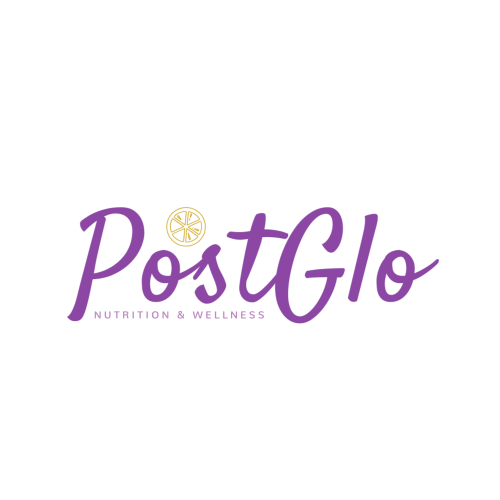Eat Well, Save Money & Help the Environment
Meg Volley, PostGlo Intern
March is National Nutrition Month, and this year’s theme is Fuel for the Future. Climate change’s effects, such as rising sea levels, the endangerment of certain species, and extreme weather events are becoming more and more prevalent day to day. A big part of sustainability is FOOD! From enjoying plant-based meals (check out our blog on meatless meals for some inspo), buying seasonal produce, and limiting food waste, there are so many ways we can help the environment on a budget.
Each week has its own sub-theme, and week three’s is Stay Nourished and Save Money. Being a parent can be pricey, and groceries are another expense to add to the list. If you feel like your grocery bill is increasing infinitely (curse you, avian flu!), then you’re in the right place! Here are some recommendations from the Academy of Nutrition and Dietetics, with our own PostGlo spin, on how to eat well on a budget.
Plan your meals and snacks. Meal planning can be difficult as a busy parent, with a variety of different taste buds at home to please and unexpected things popping up throughout the week that might throw off plans. However, meal planning doesn’t have to mean sticking to a rigid schedule of the same 7 breakfasts, lunches, and dinners over the week.
Planning meals and snacks can be simplified by choosing staple items that can be mixed and matched over the course of the week. Great examples of this are chicken, rice, pasta, meatballs, and veggies. Chicken can be used in quesadillas, rice bowls with veggies, salads, and wraps. Use pasta for spaghetti and meatballs or pasta salads with veggies for lunch.
Another way to meal plan that doesn’t require thinking of ways to combine different premade staples is making double batches of family-favorite meals and putting them in the fridge/ freezer to heat up later in the week. Try this with soups/ chilis, casseroles, and pies.
See what food you have at home before purchasing more. If having multiple half-eaten bags of chips open at once is a crime, then lock my family up. It can be difficult to remember what you have on hand, however, reorganizing the fridge/ pantry before grocery shopping is a great way to remember items you might’ve forgotten about, such as the frozen meal you’ve been meaning to make, the milk that’s about to go bad, or in my case, the chips that have yet to be finished. Focusing on really clearing out the pantry BEFORE taking a grocery trip eliminates overbuying and food waste while saving money.
Use a grocery list and shop sales when purchasing food. Ever heard the advice not to go to the grocery store while hungry? It’s true! Going into the grocery store with a full belly and list in hand prevents us from making impulse decisions out of hunger.
Secret tip: Sometimes we have our favorite brands of certain items, but for foods that aren’t brand-specific, try looking at the top and bottom shelves for more affordable off-brand/ discount items!
Learn about community resources. Federally run programs such as SNAP and WIC provide great nutrition benefits to low-income families. Additionally, there are so many community resources that supply discounted, sustainably-sourced, and high-quality groceries to your home! These programs help the environment by reducing food waste while helping your wallet at the same time. Some of our favorite programs are Imperfect Foods and Misfits Market. Find all these resources linked below!
It’s such a common misconception that eating well, helping the environment, and saving money are mutually exclusive, when this is the furthest thing from the truth! National Nutrition Month’s theme, fuel for the future, is applicable now more than ever. Food waste is a huge issue in the US, with 35% of food supply going unsold or uneaten in 2019. Simple actions like cleaning out the pantry before weekly grocery trips, and participating in programs that deliver overstock produce can help fight this issue! If not for the environment, do it for your wallet! Programs such as Misfits Market deliver groceries up to 40% lower than grocery store prices, and meal planners are shown to save over $100 each week!
Before you go grocery shopping this week, think about how you can save money, whether it be looking through the fridge and crossing a few items off your list that you already have on hand, or doubling your favorite pasta recipe to use as lunches in the following days! How much can you save on groceries this week? Happy Nutrition Month!
Check these out!
SNAP: https://www.fns.usda.gov/snap/supplemental-nutrition-assistance-program
Imperfect Foods: https://www.imperfectfoods.com/
Misfits Market: https://www.misfitsmarket.com/?exp=plans_rollback&exp=plans_rollback

